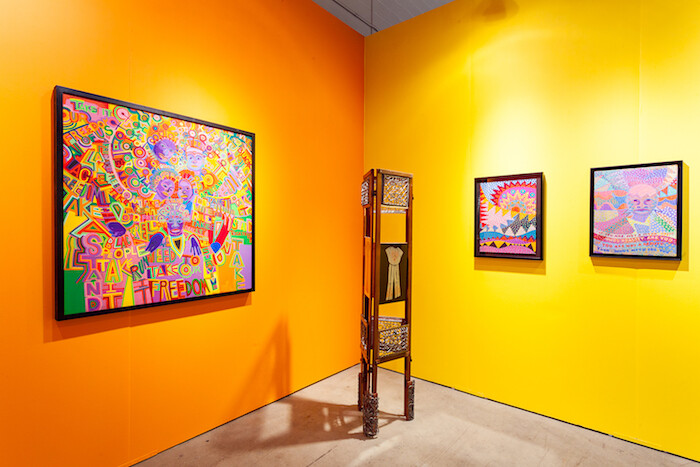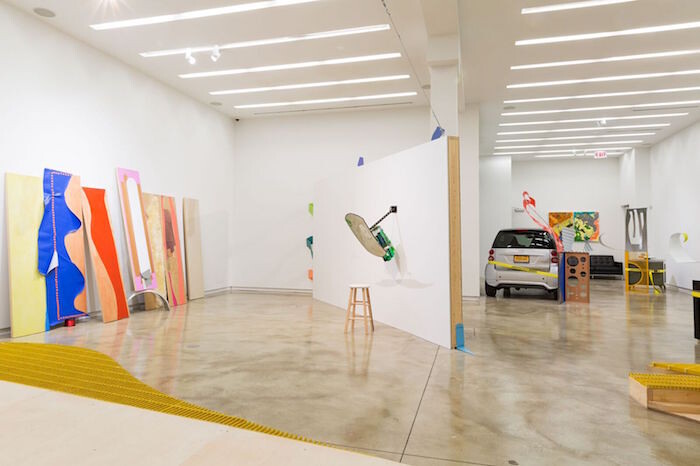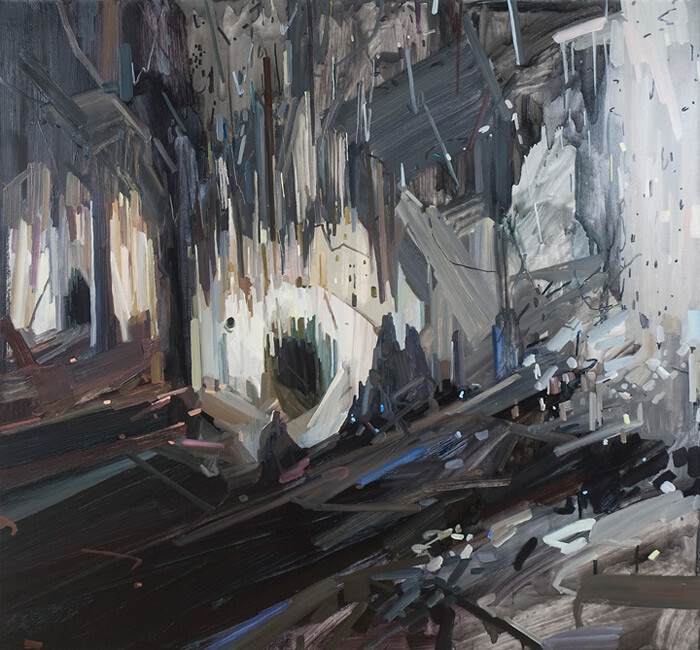Categories
Subjects
Authors
Artists
Venues
Locations
Calendar
Filter
Done
October 5, 2018 – Feature
Chicago Roundup
Orit Gat

The Tribune Tower in Chicago’s Downtown, home to the Chicago Tribune until a few months ago—it is being converted to luxury apartments—includes a collection of stones from famous buildings around the world embedded into its exterior. The newspaper’s journalists on assignment brought these stones back from Notre Dame and the Taj Mahal, the Parthenon and Hagia Sophia, and they were laid into the building with an engraving noting their origin. It epitomized the spirit of the place: a historically international city whose architectural monuments, from Louis Sullivan’s skyscrapers to Ludwig Mies van der Rohe’s modernism, are studied around the world, but also a city which attempts to bridge regionalism and internationalism, allowing this dichotomy to become a defining sense of its culture.
At the Art Institute of Chicago, one of the world’s most illustrious encyclopedic museums, both temporary exhibitions relate to Chicago’s history: there is “John Singer Sargent and Chicago’s Gilded Age,” focusing on his Chicago patrons (the painter never lived in the Windy City, these are simply the Chicago elite who traveled to Paris or London, and one patron who took Sargent on a watercoloring trip to the Florida Keys). Alongside it is an exhibition charting the short history of …
January 11, 2016 – Review
Jessica Stockholder’s “Door Hinges” and “ASSISTED”
Arielle Bier

Jessica Stockholder is an artist known for breaking conventions. Though her sprawling artworks are often referred to as installations, she defines her manifold combinations of color and everyday materials as sculpture. The two floors of Kavi Gupta in Chicago—which entwine a curated group show, “ASSISTED,” with her own solo exhibition, “Door Hinges”—resemble the aftermath of a funnel cloud, with debris scrambled in uncanny composition through two stories, a testimonial to the possibility in sculpture.
Since Rosalind E. Krauss’s canonical text “Sculpture in the Expanded Field” (1979)—which referred to the rise of earthworks like Mary Miss’s Perimeters/Pavilions/Decoys (1977-78) or Robert Smithson’s Spiral Jetty (1970)—the term “field” has become an abstract metaphor for a frame or context in which an artwork exists. Stockholder posits that the term should be expanded even further; more specifically, that sculpture can be anything “around which” or “through which” the body can move. Reinforcing this development of language around contemporary sculpture, Stockholder elevates the importance of the preposition in communicating a wonder of form, as if terms like “above,” “beneath,” “beyond,” or “below” might even become materials in the construction of an artwork. Thus, building on the concept of how door hinges function, these works articulate the qualities …
April 5, 2011 – Review
Claire Sherman’s "Palms Wild"
Michelle Grabner

Representational landscape is a risky genre. Its natural grandeur and boundless perspectives can seduce, instilling wonder and discovery. Yet more often, the genre triggers trite familiarity with both the subject and the material quality of the medium. Claire Sherman, however, with her nimble brushwork and compositional restraint, manages to navigate the perceptual underpinnings of landscape painting while confidently delivering its abstract realities. Back in the 19th century, Albert Bierstadt, a virtuoso at conjuring the extreme picturesque dazzling landscapes of the American West, elicited profound consternation from his critics. His depictions of glimmering mountain valleys, spectrum flecked waterfalls, and incandescent sunsets were shunned for their shameless idealism and their gaudy staging of the sublime. The only similarity that Claire Sherman shares with Bierstadt is an uncommonly large canvas size and the desire to demonstrate the profound magnitude in the natural world wrought by virtue of paint. Yet where Beirstadt employed fantastic illusionist devices to convey dense atmospheric perspectives, Sherman conversely models the physical properties of paint to constitute the organic and inorganic structures of landscape.
This is not to say that Sherman’s landscapes are flat. On the contrary, they are constructed, or, moreover, built, so that geological formations and foliage sit on …
